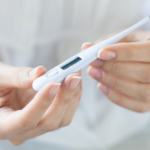“Well, I got over it. I mean, I don’t think anyone really gets over something like that. The guy was caught. He’s in jail for life, like he’s off the street. But I wish they’d electrocuted him. It was tough. One sister died of an overdose five years later. The other two drink. I mean, they’re definitely alcoholics. Me … I saw a therapist for a while and was admitted when I took an overdose of Valium. I finished high school, married too young, got divorced.” She stopped for a moment. “I sound really whacked, don’t I?”
“No, it sounds like things were awful.”
“Well, they were. But the next guy, Stanley, that’s who I’m married to now, he’s a peach. Good guy. Getting the implants helped. He liked them. He still likes them, and then—like out of the blue—I’m screwed again. The silicone implants are killing me.”
Mass somatization, I believe, was at the root of the silicone breast implant epidemic. A perfect storm of circumstances existed: A susceptible population of women, initial reports linking silicone implants to autoimmune disease, media hype & litigation lit the fuse of disabling fear & suffering.
Milly’s story was extreme, but researchers have documented a number of differences between women who are seeking breast augmentation and the general population. In nearly every measure of psychological health, from low self-esteem, to depression, to frequency of psychiatric admissions, divorce and increased alcohol and cigarette use, in general, breast augmentation women differ from women who forego the procedure. Although some women report improved self-esteem and other measures of improved psychological health after augmentation, imagine the emotional trauma to a woman who is told her breast implants have triggered an incurable connective tissue disease?
The vivid imagery of silicone particles traveling throughout the body means you can’t undo the damage. The poison is everywhere. Sleep is impaired. Stress goes through the roof. Free-floating anxiety settles in. Headaches, fatigue, diffuse pain ensue. This process of somatization—the development of myriad unexplained bodily symptoms without a clear underlying disease—may morph into mass somatization when the suspected trigger is subject to mass media coverage and potential litigation.
Mass somatization, I believe, was at the root of the silicone breast implant epidemic. A perfect storm of circumstances existed: A susceptible population of women, initial reports linking silicone implants to autoimmune disease, media hype and litigation lit the fuse of disabling fear and suffering. Hundreds, then thousands, then hundreds of thousands of women developed life-altering symptoms they believed were due to their breast implants.
